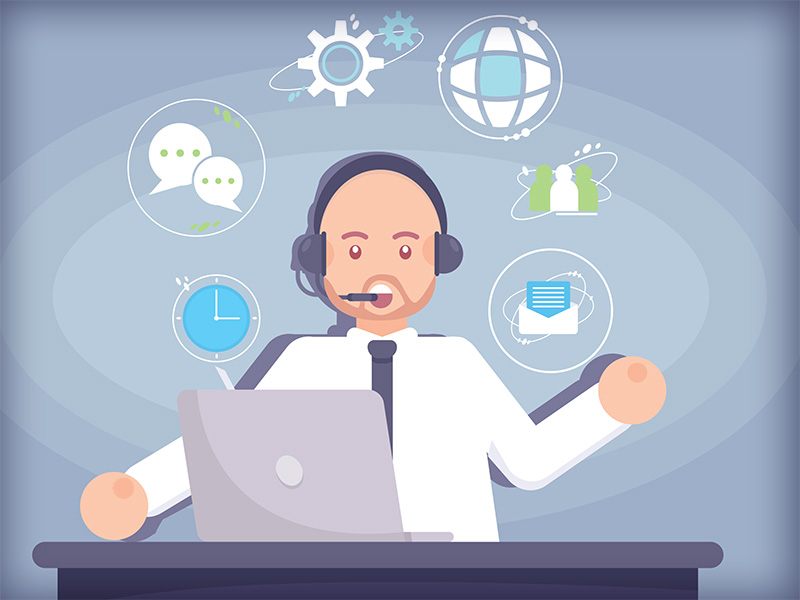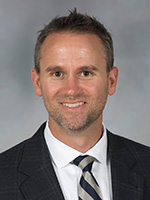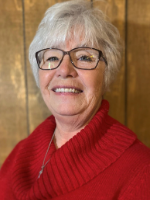Stealth VoIP conversion enhances employee productivity

One of the most impactful business conversions in the University of Mississippi Medical Center’s rich history was completed in October, and many of those who benefitted the most from the systems upgrade may not have even noticed.
Yet the stealthy implementation of new Voice Over Internet Protocol, or VoIP, software by the Division of Information Systems has greatly increased employee efficiency and productivity, vastly improved the reliability of UMMC’s communication system and significantly lowered institutional costs.
Perhaps most significantly, the new system has made it possible for hundreds of UMMC employees to work remotely during the COVID-19 pandemic, avoiding potential exposure to the novel coronavirus and providing a real benefit to the institution that may never be fully tabulated.
According to Kevin Yearick, UMMC chief information officer-technology, the new VoIP system has already transformed how Medical Center leaders think about usual business operations at UMMC.

“It used to be that everybody had to have a hard phone, had to be physically on campus and had to be logged in to receive their calls,” Yearick said. “Now they’re able to put an app on their smartphones or laptops and set up shop virtually anywhere.
“This really allows our business leaders to start thinking a bit more creatively, potentially start deploying resources for employees to use without having to come to the Medical Center.”
The project initially targeted the Medical Center’s enterprise health system and its surrounding ambulatory clinics but grew to include UMMC Lexington, UMMC Grenada and the new Kathy and Joe Sanderson Tower at Children’s of Mississippi - all without having to purchase additional equipment and licensing. Although it took about four years to complete, Yearick said the new system implementation immediately realized substantial savings for the institution.
“Right out of the gate we saved $300,000 in licensing fees we would have had to pay the former system provider,” Yearick said. “The services we get from this unified collaboration system - voice, video and chat, all from the same application - there’s power in that. Our Help Desk can instantly reach in and help out users with a click of a button.
“It’s hard to quantify the new service. Just the employee engagement component alone - how much would it have cost the institution in service time to have kept everybody here during a pandemic? It’s hard to count the savings, but they are real.”
Yearick said the Medical Center had relied on the same antiquated telephone system - with periodic investments in upgrades - for nearly three decades when institutional leaders decided to acquire new VoIP software that would better serve the institution in the 21st century.
“The number of times a hardware failure would take down our phone system was alarming,” he said. “For a health care institution like ours, that created a significant pain point for us. We weren’t able to purchase parts for the old system any longer - we ended up having to turn to eBay to obtain some of the parts rather than our customary supply channels.
“We started having repeated system memory issues. Once a month, we were having to take emergency outages to reboot the phone system. We started having breakdowns in the middle of the day. We had been talking about an upgrade for several years, so when It became such a massive problem for us, we took the plunge.”
Yearick said Patricia Little, longtime telecommunications supervisor, had been at the forefront in requesting a replacement system. Little said the biggest obstacles would be ensuring a new enterprise telephone system could integrate with the older system as the project progressed, and the seamless conversion of more than 350 contact center agents and 200 call flows without any disruption to patients.

“The transition allows us to consolidate voice and data networks,” Little said, “and move to a SIP (Session Initiation Protocol) that allows for additional backup and disaster recovery.
“The new platform provided the Medical Center with many more features and options that will move us into a new era of communication.”
Before the new VoIP could be procured, however, certain system modifications made for the older network had to be examined and cleared up. Russell Donald, director of enterprise services and integration, was charged with ensuring all the information systems have the appropriate infrastructure so they can perform the tasks for which they were designed.

“A phone system is one of the most basic, and yet important, pieces of technology an institution has,” Donald said. “As with any new service, change is hard, and technology that was created 20 years ago does not perform the way a new one will.
“What was important to business then may not be so important now, and that feature is not available.”
Yearick said DIS had to ensure the existing network was robust enough to handle the new infrastructure.
"We went out to all the closets and replaced all the equipment the computers and incoming phones would plug into,” he said. “During the last few years, we’ve replaced the wireless network that allowed us to move into a ‘next generation’ environment.
“We were able to use a local network integrations company with a national footprint to sit next to us and partner with our end users on creative ways of doing business in the new world. And we were ultimately able to reduce the number of licenses that we bought by more than 2,800.”
Along with those daunting tasks, the communications needs of virtually everyone at the Medical Center who used a hard-wired telephone had to be considered.
“A newer voice system meant we wouldn’t have to replace actual telephones one-for-one,” Yearick said. “Instead of purchasing a phone for those who received a minimal number of calls, we could choose an alternative We reduced the number of physical phones from 17,000 to 10,000 and we migrated an additional 5,000 devices to a ‘soft’ phone that resides on your computer.”
That “soft phone” transition made it possible for many employees to transition to a remote work environment - which unexpectedly yielded immediate dividends. Donald said right when DIS was entering the last, contact center phase of the VoIP transition, the COVID-19 pandemic arrived.
“We had a short amount of time to take all the people in the contact centers and others around campus and provide a way for them to go home and still work like they were sitting in their office,” he said. “The new solution was capable of doing this in a way the old one was not, so we utilized those features.
“Pat Little and her team went to work setting up and training the staff and Alex Wilson (director of IT service delivery) and his field support staff began assigning laptops for home use. That initiative would not have been possible as quickly or without a great deal of cost had we not had the new system in place.”
“We certainly didn’t see COVID-19 coming,” Yearick said, “but because we took that initiative, we were able to relatively quickly and relatively seamlessly move folks home to work in a remote capacity.”
“Our end users are able to use instant messaging, collaborate within the same application to share files, and make a phone call - all from the same application. As more and more folks become familiar with the application, we see them taking communication and problem-solving collaboration to a level that we’ve never seen before.”
Little said the integration of a state-of-the-art unified communications solution has already proven invaluable to the Medical Center.
“Jabber has transformed the way we communicate, allowing you to use your computer, cell phone, tablet or any other device to answer and receive calls via your work number while protecting your private cell number from the outside world,” she said. “Disaster recovery is more robust than it has ever been before with three data centers located in Starkville, ITS and in the Z building on campus.
“Many new features allow end-users to use their telephones in new and innovative ways.”
Indeed, Yearick said the system is robust enough to support the institution’s telemedicine network across the state: UMMC health care providers can instantly connect to those with whom UMMC has service agreements with via video.
Little said she is proud of the approximately 50 DIS staff members who contributed to the deployment of the project - all while facing the COVID-19 pandemic.
“This project involved just about every area of DIS and would not have been possible without each and every person’s cooperation,” she said, “from the communications team, the wiring team, network engineers, project management, field support, training, hardware and software support, and last but not least, our end-users who were so patient and understanding as we worked through the process.
“The telecommunications team assisted with every aspect, including but not exclusive to campus notifications, phone discovery and inventory, installment of new phones and removal of old, and assisting callers to ensure their communication workflow was disrupted as little as possible.”
Yearick said projects as large as the VoIP transition could “go wrong in any number of ways” and credited the DIS staff for its remarkable achievement.
“Everybody just expects voice systems to work,” he said. “We now have a highly integrated system across three data centers; before, we relied on a closet in the old hospital that had no redundant power.
“We have resiliency now, and I have been so proud of the partnerships we have across campus and across the enterprise to truly transform how we collaborate with one another. This system has actually changed how we do our business.”


